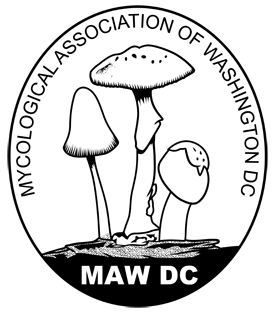On March 1, I found interesting group of “deadly Galerina” mushrooms (G. marginata). You definitely should get to know the Galerina marginata mushroom -- just one of these can do you in! For more detail see comments below on this collection, as well as at Mushroom Expert. http://www.mushroomexpert.com/galerina_marginata.html.
Once you see these mushrooms, you should be able to easily distinguish them by a combination of their characteristics (if you are paying attention). In case you don’t get to attend the meeting, I have included below some specific comments about the Galerina marginata that I found compared to similar mushrooms (pictures included are honey mushroom (Armillaria mellea (ringed honey mushroom), Flammulina velutipes (wild form of enoki), and Mycena eaiana.
· Got a spare liver handy? G. marginata, like the two deadly Amanita mushrooms (A. bisporigera in the east and A. phalloides in the west) will destroy your liver if not treated promptly and will kill you if you don’t have another liver lined up for a transplant.
· Possible confusion with edibles. G. marginata can be confused with a couple of other edible mushrooms and mistakenly collected along with those edible mushrooms because they grow in the same habitat and season. In this case, these mushrooms were found in the same place that I have found honey mushrooms (Armillaria species) and wild enoki mushrooms (Flammulina velutipes). On initial inspection, I casually assumed what I was seeing was wild enoki, because that is a cold weather mushroom, and I had found it there before. But after you get to know these other mushrooms, there are clear differences that will distinguish them, but it takes close inspection to see the differences. I also understand that G. marginata could be confused with various psilocybe species.
· Variability in size and color and season. G. marginata is often described as a LBM (little brown mushroom), but it is not always brown and not always little. The collection I found was unusual for a variety of reasons – there were more growing together than I have ever see at one time, there were both young and old specimens that illustrates the variability in color and size. I usually see a few of these in the fall, but they can occur in the early spring as well because they are a cold weather mushroom. To find these growing at the beginning of March in this area seemed unusual.
Similarities and distinguishing characteristics.
Similarities: All of these mushrooms grow on dead wood and down logs, and all of them can be golden yellow at some point. G. marginata tends to be slightly smaller than wild enoki and generally, but not always honey mushrooms are larger. The size range clearly overlaps.
Differences
-
· Spore print – rust brown. Honey mushrooms and wild enoki both have a white spore print. This is the best distinguishing characteristic, but might not be detected in the field.
-
· Habitat – always on wood, generally well-rotted logs with moss present. Honey mushroom more commonly from buried roots and at base of a stumps or tree, wild enoki on dead wood but not very decomposed yet, often with bark still on.
-
· Habit – single mushrooms in groups. Armillaria sp. and F. velutipes are generally clustered coming from a single point (cespitose).
-
· Annulus (ring) - ring present, but not prominent. Honey mushrooms generally have a prominent ring except A tabescens (ringless honey). Wild enoki have no ring.
-
· Stipe – Brownish and striated. Honey mushrooms, especially ringless honey, have a similar striated brownish stipe, through more robust. Wild enoki have a velvety dark stipe.
-
· Cap – may be moist with even coloring, but not sticky, with striations at edge when older. Honey mushroom cap has distinctive short dark hairs in the center of the disk. WIld enoki is sticky as well as moist, and a bit shiny.
-
· Gills – can be attached and even slightly decurrent can separate from the stipe in age, light yellow color, similar to wild enoki when young, but will darkening with age. Honey mushroom more buff tan color, not darkening.
Special comments on the pictures:
-
· Young golden yellow specimens were very similar color to wild enoki that I find. Compare http://www.mushroomexpert.com/flammulina_velutipes.html.
-
· Short gills -some gills do not extend all the way from the rim to the stipe.
-
· Striations – apparent on the stipe, and also at edge of cap in the older specimens
-
· Convex cap –some specimens (photo 6) had caps that turned up at the edge, which I had never seen before (perhaps excessive moisture recently).
-
· Some of these specimens were larger than indicated in field guides – the largest I found was about 3.5 inches (9 cm), the largest I have ever seen .
-
· Brown caps were darker than color of brown honey mushrooms that I find, but with some yellow orange still showing.
